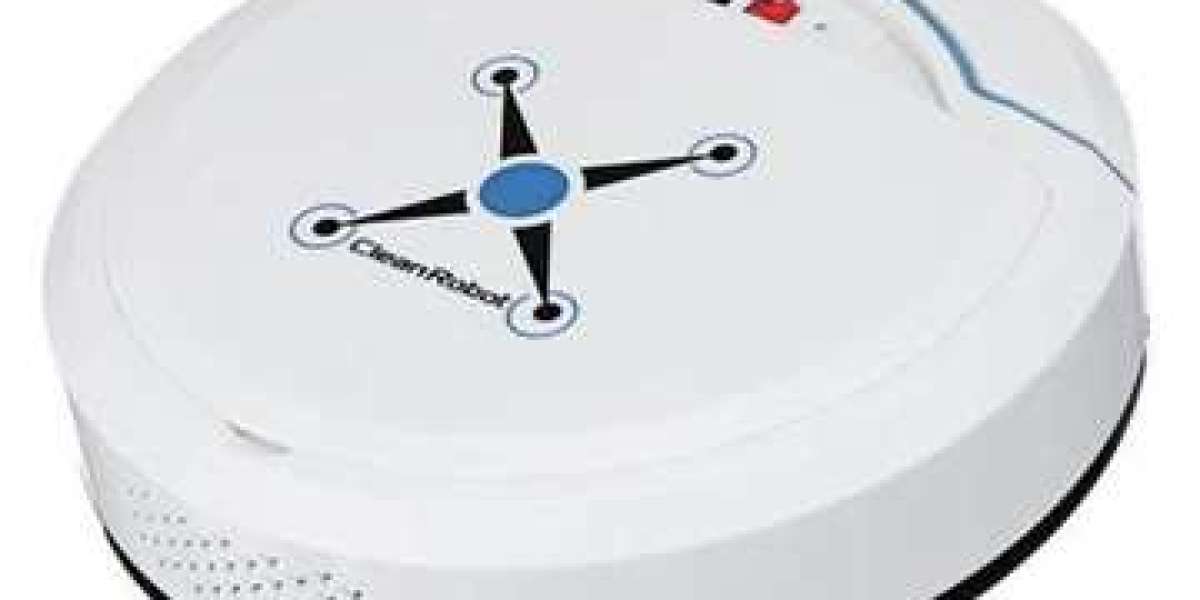Keeping windows clean has always been one of the more tedious and physically demanding chores. Whether at home or in the workplace, crystal-clear windows enhance the appearance of a building, allow more natural light in, and contribute to a cleaner and more pleasant environment. However, cleaning windows—especially those that are large, high, or difficult to reach—isn’t always easy. That’s where robotic window cleaners come into play.
Robotic window cleaners are innovative devices designed to automate the task of cleaning windows, saving time, improving safety, and ensuring spotless results. As smart home technology continues to evolve, these devices are quickly becoming essential tools in both residential and commercial cleaning routines.
What Is a Robotic Window Cleaner?
A robotic window cleaner is an automated device that attaches to glass surfaces and moves across them to remove dust, dirt, and smudges. It uses suction or magnets to stay in place, and it is equipped with microfiber cleaning pads, cleaning solution sprayers, sensors, and motorized systems that allow it to navigate and clean windows efficiently.
These robots can be controlled manually using a remote control or a mobile app. Some advanced models can even operate autonomously, using built-in AI to map out and clean window surfaces on their own.
How Do Robotic Window Cleaners Work?
Robotic window cleaners combine several modern technologies to deliver effective cleaning results. Here’s how they work:
1. Attachment and Stability
Most robotic window cleaners use a vacuum suction system to attach themselves securely to glass surfaces. This allows them to clean vertical windows, even several stories above the ground. Some models, particularly double-sided cleaners, use magnetic adhesion to cling to both sides of a window at once.
2. Movement and Navigation
Once attached, the robot moves in a pre-programmed pattern, typically a Z or N shape, to cover the entire surface. The device is equipped with edge-detection sensors that help it recognize window boundaries and avoid falling off.
3. Cleaning Mechanism
Robotic window cleaners feature microfiber pads or rotating brushes that scrub away dirt. Some units include a cleaning solution sprayer to help loosen grime for a more thorough clean.
4. Control Options
Many devices come with a remote control or support Wi-Fi or Bluetooth connectivity, allowing users to manage the robot via a smartphone app. You can start, stop, pause, or schedule cleaning tasks with ease.
5. Power Source
Robotic window cleaners are powered either by rechargeable batteries or a plug-in power cord. Battery-operated models often have a backup battery that keeps the device attached to the glass in case the main power supply is interrupted.
Benefits of Robotic Window Cleaners
Robotic window cleaners offer a wide range of benefits, making them a worthwhile investment for many households and businesses.
1. Saves Time and Energy
Cleaning windows manually can take hours, especially in larger homes or office buildings. A robotic window cleaner automates the entire process, giving you more time to focus on other tasks.
2. Improves Safety
Climbing ladders or leaning out of windows can be dangerous. Robotic cleaners eliminate the need to put yourself at risk, especially for high or hard-to-reach windows.
3. Consistent and Streak-Free Results
Robots apply even pressure and follow a consistent cleaning pattern, reducing the chances of streaks, missed spots, or uneven cleaning—common issues in manual window washing.
4. Ideal for Large or High Windows
These devices are perfect for tall windows, glass facades, skylights, and other architectural features that are difficult to clean by hand.
5. Accessible for Everyone
Elderly users or individuals with limited mobility can use robotic cleaners to maintain a clean home without needing to climb or stretch.
Common Use Cases
Robotic window cleaners are useful in a variety of settings:
Residential Homes: For families with large windows, glass sliding doors, or conservatories.
High-Rise Apartments: Perfect for upper floors where cleaning the outside of windows is dangerous or impossible without professional help.
Offices and Commercial Buildings: Maintain a professional look with minimal maintenance.
Retail Stores and Showrooms: Ensure display windows are clean and attractive to customers.
Hotels and Restaurants: Enhance guest experience with sparkling clean windows.
Key Features to Look For
When shopping for a robotic window cleaner, consider the following important features:
Strong Suction Power: Essential for staying attached to vertical surfaces.
Advanced Sensors: Helps the robot detect edges and avoid falling or getting stuck.
Efficient Cleaning Patterns: Optimized movement ensures full coverage.
Remote/App Control: For easy operation, especially from a distance.
Backup Battery: Prevents accidents in the event of power failure.
Quiet Operation: Especially important for indoor use or in professional settings.
Easy Maintenance: Pads and cleaning components should be washable and replaceable.
Potential Limitations
While robotic window cleaners are highly useful, there are a few limitations to be aware of:
1. High Initial Cost
Advanced models can be expensive, although the investment can pay off over time by reducing the need for professional cleaning services.
2. Size and Shape Compatibility
Most robots work best on large, flat, frameless glass. Irregularly shaped or very small windows may not be suitable.
3. Weather Restrictions
Outdoor cleaning is limited by weather. Rain, wind, or extreme temperatures can affect performance or even damage the device.
4. Pad Maintenance
The microfiber pads must be cleaned regularly to ensure effective performance and avoid spreading dirt.
5. Requires Supervision (Sometimes)
Although mostly automated, some models may need monitoring to ensure they don’t get stuck or miss spots—especially during the first few uses.
The Future of Robotic Window Cleaning
The robotic window cleaner market is expected to grow rapidly as more people embrace smart home technologies. Future innovations may include:
AI-Powered Learning: Robots that adapt to your windows for faster, more efficient cleaning.
Voice Assistant Integration: Compatibility with Alexa, Google Assistant, and other smart home systems.
Self-Cleaning Features: Robots that clean their own pads or return to a dock for charging and maintenance.
Drone-Based Cleaners: Concepts for drone-powered external window cleaning are already in development for skyscrapers and large buildings.
Conclusion
Robotic window cleaners are a game-changer in modern home and office maintenance. They offer a safe, time-saving, and efficient way to maintain spotless windows with minimal effort. While they may come with an initial investment, their long-term benefits in convenience, safety, and cleaning quality make them an excellent choice for anyone looking to upgrade their cleaning routine.
Whether you're a busy homeowner, a professional in a high-rise office, or someone simply tired of dealing with dirty windows, a robotic window cleaner might just be the perfect solution.



